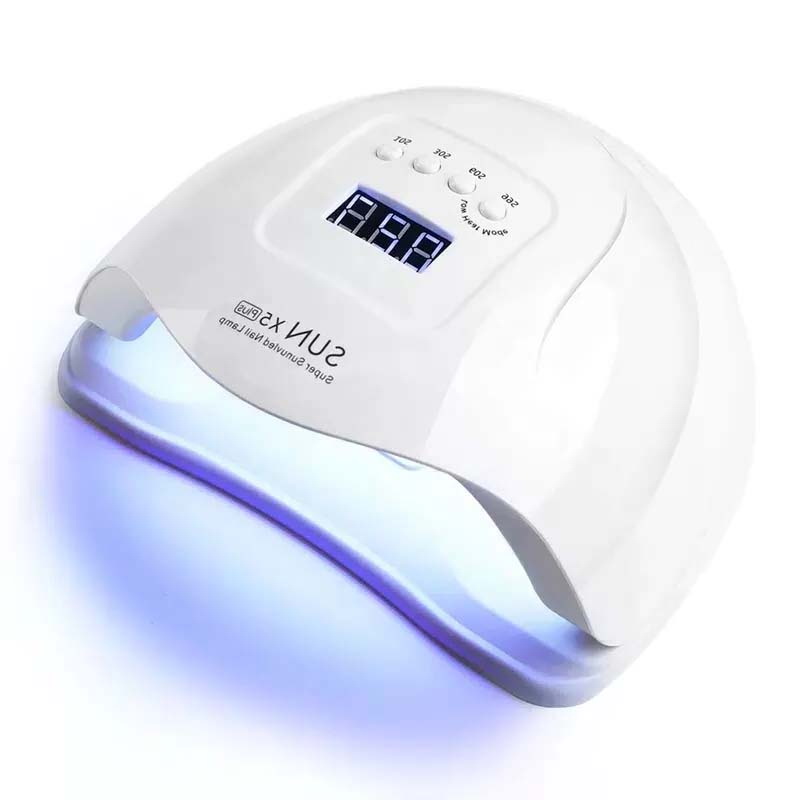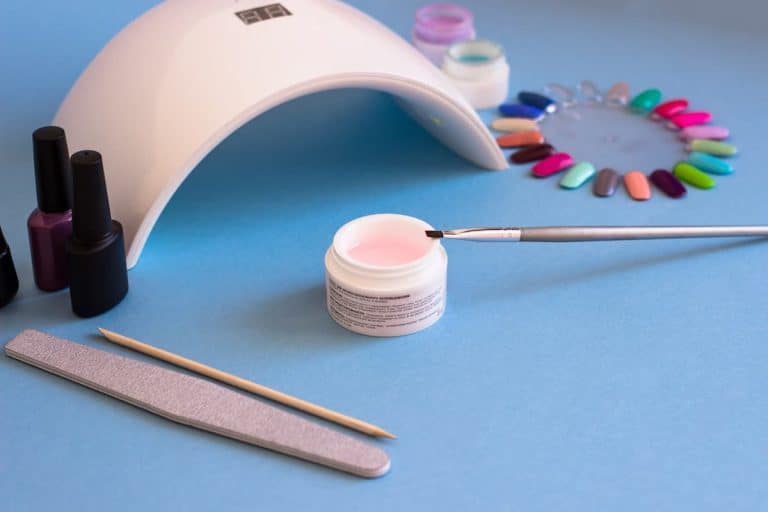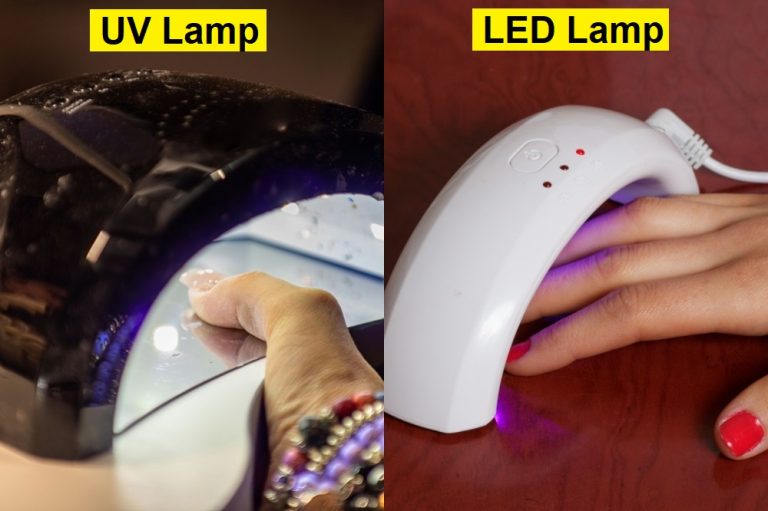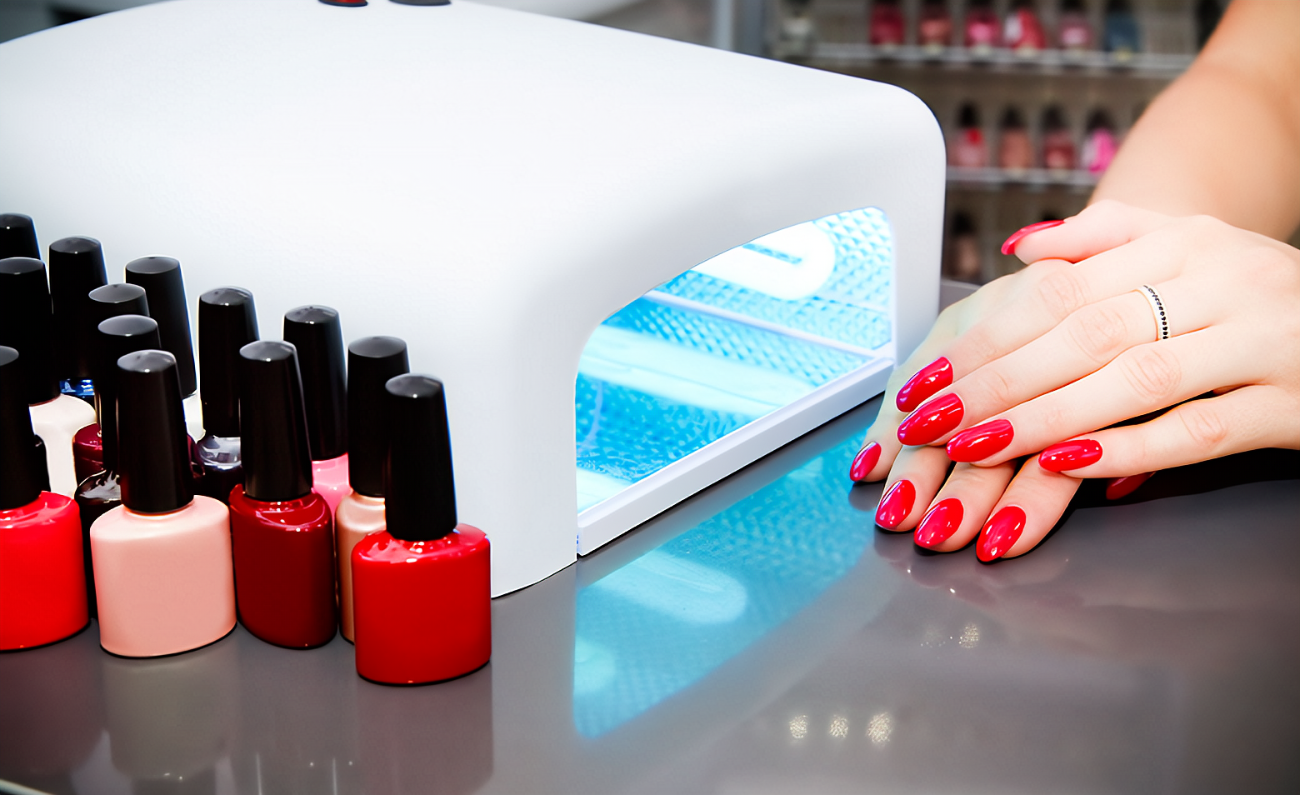Welcome to iksbeauty, your go-to place for specialized nail care. We shall explore the fascinating subject of UV nail lights and their conceivable connection to skin cancer in this post. It’s critical to comprehend the details surrounding this problem given the rising concern among nail salon customers and workers. We will examine the academic studies, professional viewpoints, and safety precautions around UV nail lights. You’ll have a thorough knowledge of whether UV nail lights may really cause skin cancer by the conclusion of this essay. So let’s get started and throw some light on this crucial topic.
How do UV nail lamps work?
For the purpose of curing and drying gel-based nail treatments, UV nail lights are specialist equipment used in the nail business. UVA and UVB rays, which are emitted by these lamps, are essential to the polymerization process of gel nail enhancements. In order to provide excellent drying and durable effects, UV nail lamps are made up of a number of UV bulbs that are carefully positioned to spread the UV radiation throughout the nail surface. These lamps are often seen in manicure salons for professionals and are designed to shorten the time it takes for gel nails to dry, giving customers a fast and effective option.
Both nail professionals and customers looking for long-lasting and attractive nail enhancements must comprehend the fundamental ideas and uses of UV nail lights. These lights help make gel nail treatments more convenient and effective by using the power of UV light. Examining the possible effects of chronic UV radiation exposure and its connection to skin cancer is crucial. In the parts that follow, let’s investigate this link in more detail.
Is there a connection between skin cancer and UV nail lamps?
Concerns about a possible connection between UV nail lights and skin cancer have been raised as gel nail treatments have grown in popularity. In order to evaluate if there is a connection between these two, it is critical to review the available research and expert views.
Numerous investigations on the possible dangers of UV radiation exposure from manicure lights have been made. According to several studies, these lights generate very small amounts of UV radiation that are unlikely to do any damage. Though at lower doses, continuous and frequent exposure to UV radiation has been linked to an increased risk of skin cancer, according to previous research.
The views of experts on this issue differ. While some experts contend that there is little danger due to the brief exposure duration during gel nail treatments, others urge caution and suggest adopting preventative steps to minimize any damage. It is crucial to remember that UV nail lamps are not the only sources of UV radiation; UV rays are also emitted by sunshine and tanning booths.
In the parts that follow, we’ll go into more detail on how UV radiation affects the skin and examine the many forms of skin cancer and the risk factors that go along with them. We may decide on the possible hazards and essential measures associated to UV nail lamps by having a thorough grasp of the existing research and expert viewpoints.
UV Radiation’s Effect on the Skin
Skin damage from UV radiation, which includes UVA and UVB rays, has the potential to be severe. Assessing UVA and UVB radiation’s influence on skin health requires an understanding of their unique impacts.
UVA Radiation: Because UVA rays have a longer wavelength, they may reach the dermis by penetrating deeper layers of skin. They cause wrinkles, fine lines, and age spots, which are signs of early skin aging. Additionally, UVA radiation may weaken the immune system, which increases the vulnerability of the skin to injury.
UVB Radiation: UVB rays have a shorter wavelength and mainly impact the epidermis, the outer layer of the skin. They are thought to be the primary cause of skin cancer and sunburns. The DNA in skin cells is damaged by UVB radiation, which causes mutations that may eventually result in the growth of malignant cells.
Basal cell carcinoma, squamous cell carcinoma, and melanoma are just a few of the skin cancers that may be influenced by UVA and UVB exposure. The danger of these negative skin impacts is increased by exposure to UV radiation, whether from natural sources like sunshine or artificial ones like UV nail lamps.
We will examine several skin cancers, the risk factors linked to them, and the role UV nail lights may play in possible UV radiation exposure in the sections that follow. Understanding the particular effects of UV radiation on the skin will help us assess the dangers and take the necessary precautions to safeguard both ourselves and our customers in the nail salon setting.
Skin Cancer Types and Risk Factors
There are several forms of skin cancer, each with unique traits and risk factors. In order to assess the probable link between UV nail lamps and skin cancer, it is essential to understand these various kinds and their risk factors.
- Basal Cell Carcinoma (BCC): The most prevalent kind of skin cancer is basal cell carcinoma. It often appears on skin that has been exposed to the sun, such as the hands, neck, and face. A lifetime of severe sun exposure, a history of sunburns, a weaker immune system, and certain hereditary disorders are risk factors for BCC.
- Squamous Cell Carcinoma (SCC): Squamous cell carcinoma primarily affects skin that has been exposed to the sun. It has a tendency to multiply more quickly and has the capacity to invade more bodily regions. Chronic sun exposure, past burns or skin wounds, contact with certain chemicals, and immunosuppression are all risk factors for SCC.
- Melanoma: The most serious kind of skin cancer, melanoma may appear anywhere on the body, even in places that are not exposed to sunlight. A history of sunburns, extensive sun exposure, a high number of moles, unusual moles, a family history of melanoma, and genetic susceptibility are all risk factors for melanoma.
It is crucial to remember that although excessive sun exposure poses a considerable risk for developing skin cancer, it is not the only risk factor. An individual’s predisposition to developing skin cancer might also be influenced by other variables, such as genetics and personal medical history.
In the sections that follow, we’ll look at UV nail lamps in relation to these risk variables and weigh their possible effects on the occurrence of skin cancer. Understanding the many forms of skin cancer and the risk variables that are linked to them will help us assess the total risk environment and make wise judgments about the usage of UV nail lamps.
Use of UV Nail Lamps in the Nail Business
Due to its effectiveness in curing gel-based nail treatments, UV nail lights are extensively employed in the nail business. Evaluation of the possible effects of UV radiation exposure in relation to nail treatments requires an understanding of their function, frequency of application, and light intensity.
- UV nail lights are intended to cure and harden gel nail products in an effective manner. These lamps provide UV light, which activates photoinitiators already present in the gel to start the polymerization process and produce strong, long-lasting nail enhancements. The regulated atmosphere that the lights create shortens the drying period, enabling nail professionals to finish gel nail treatments efficiently.
- Use of UV Lamps: The use of UV lamps varies from salon to salon and is dependent on the particular nail treatment being performed. Gel nail applications, such as gel paint, gel extensions, and gel overlays, often include UV nail lamps. Depending on the kind of gel used and the intended curing period, the amount of time that the gel is exposed to the UV light from the lamp might be anything from a few seconds and a few minutes.
- UV nail lights release UV radiation, particularly in the UVA wavelength, at a high light intensity. Depending on the particular lamp and its construction, the UV light’s intensity might change. It is important to remember that various UV nail lamp types may produce variable amounts of UV light. While certain lamps may release lower amounts of UV radiation than others, others may have built-in safety measures that filter or minimize the quantity of UV radiation emitted.
We shall go into the study on UV nail lights and their possible effects on skin health in the sections that follow. We can more accurately estimate the possible hazards and look into solutions to reduce any potential damage by comprehending the UV nail lamp use patterns and light intensity in the nail business.
Findings from Research and Controversies
Numerous data from studies on the possible connection between UV nail lamps and skin cancer have generated both support and doubt for the hypothesis. Reviewing these study findings and being aware of the many viewpoints on the subject is crucial.
- Supporting Evidence: According to certain research, UV nail lights generate very small amounts of UV radiation and may not significantly increase the risk of skin cancer. The brief exposure duration during nail treatments and the little amount of skin surface exposed to UV radiation are often emphasized in these studies. Additionally, supporters contend that the risk of skin cancer from UV nail lights is equal to that from other typical activities that expose people to UV light, such being outside.
- Perspectives that are Difficult to Understand: On the other hand, several research and experts express concerns about the cumulative effects of frequent, long-term UV exposure, even at low levels. They contend that frequent trips to nail salons and prolonged exposure to UV nail lights may possibly raise the risk of skin cancer. These viewpoints often emphasize the need of taking into account individual susceptibility since some people may be more sensitive to UV radiation or have genetic predispositions that make them more vulnerable.
While study results might provide insightful information, it is important to recognize the continuing discussions and the need for further research. The current disputes surrounding this subject may be exacerbated by the fact that different scientific research may use different methodology, sample sizes, and results.
The effects of UV radiation on the skin will be discussed in the parts that follow, and we’ll also look at the safety precautions that may be used in a nail salon setting. We can get a thorough grasp of the possible dangers connected with UV nail lamps and their influence on skin health by taking into account a variety of study results and opposing points of view.
Methods to Reduce Potential Risks
There are safety guidelines and precautions that may be taken while using UV nail lights to reduce the chance of developing skin cancer. By adhering to these recommendations, people may take advantage of the advantages of gel nail treatments while also protecting the health of their skin.
- Wearing protective gloves may give another layer of protection between the hands’ skin and UV rays when receiving gel nail treatments. There are specialized UV-protective gloves available that are intended to block most UV radiation. Direct skin exposure to UV radiation may be decreased by using gloves in the nail application procedure.
- Apply Broad-Spectrum Sunscreen: Before using a UV nail lamp, applying a broad-spectrum sunscreen with a high SPF to the hands, wrists, and exposed skin may help protect the skin from dangerous UV radiation. Sunscreen should provide UVA and UVB protection, and it should be reapplied as instructed on the label of the product.
- Limit Exposure Time: It’s important to keep your time spent in front of UV nail lights to a minimum. The prescribed cure durations for gel products should be followed by nail technicians. To ensure that the exposure time is maintained to a minimum while still ensuring adequate curing, clients may talk with their nail technicians.
- Regular Skin Exams: For the early identification of skin cancer, it is crucial to regularly examine the skin for any changes or anomalies. Regular UV nail lamp users should be watchful and do self-examinations to look for any new moles, changes in existing moles, or any other unsettling skin anomalies. It is advised to see a dermatologist for a comprehensive evaluation if any alarming symptoms are present.
We’ll look at several nail-related choices in the sections that follow that don’t depend on UV nail lights. Individuals may enjoy gel nail treatments with fewer possible dangers and a greater emphasis on preserving skin health by putting these safety advice and actions into practice.
Different Options:
Alternative manicure procedures and tools that do not depend on UV light are available to reduce any possible hazards of skin cancer linked to UV nail lights. These substitutes provide a safer method for improving nails while lowering the dangers to skin health.
- LED Nail lights: LED nail lights cure gel nails by using light-emitting diodes (LEDs) rather than UV bulbs. LED lighting sources have a more focused spectrum of light that mainly emits the precise wavelengths needed for gel curing. In comparison to UV nail lights, LED nail lamps often cure nails faster and produce less heat, making them a preferred choice in the manicure business.
- Systems that use dip powder do not need UV light since they use a different application method. This technique uses a mix of colored powders and glue to produce strong, long-lasting nail enhancements. After dipping the nails into the powder and applying a topcoat, the nails have a glossy, chip-resistant finish.
- Natural nail care is an approach that completely does away with the usage of artificial improvements. This method is centered on preserving and improving the strength and aesthetics of natural nails via good nail care habits, consistent moisturizing, and the use of nourishing and strengthening treatments.
People may still have healthy, attractive nails without the possible hazards linked with UV nail lights by investigating these alternate methods and tools. Based on individual tastes and nail care objectives, nail technicians may advise and offer the best options.
The significance of education and awareness in the nail business will be covered in the parts that follow, with a focus on the need of comprehending the dangers and making decisions that emphasize skin health.
Education and awareness are crucial.
Within the nail business and among customers, it is critical to spread knowledge and encourage education about the possible link between UV nail lights and skin cancer. Both nail technicians and customers may emphasize skin health by making educated judgments and taking the required safeguards by enhancing their knowledge and awareness.
- Education in the nail industry: It’s crucial to provide nail technicians in-depth training on the possible dangers of UV nail lights and the need of taking precautions. Training courses and seminars have to include topics like UV radiation, how to avoid skin cancer, and alternate methods. By giving nail technicians the information they need, they can counsel customers with confidence and make their salons safer for everyone.
- Consumer Awareness: Increasing consumer awareness is crucial for enabling people to make wise decisions about their nail care. The possible hazards of UV radiation and the viable alternatives may be explained in brochures and other educational materials that nail salons can display. Additionally, salons may interact openly and honestly with customers, responding to any issues and going through the safety precautions they have put in place.
- Collaboration: It is advantageous to encourage cooperation between the nail business, dermatologists, and other healthcare specialists in order to improve education and awareness. Together, they may provide recommendations, best practices, and educational materials that support secure nail care procedures and emphasize the significance of skin health.
The nail industry can improve the general wellbeing of nail technicians and customers by highlighting the value of education and awareness. Increased awareness and comprehension encourage a safer and more knowledgeable approach to nail care, guaranteeing that people may enjoy beautiful nails while placing a priority on their skin health.
The main conclusions and advice about UV nail lights and their conceivable connection to skin cancer will be summed up in the last section.
Final Thoughts and Suggestions
The following findings and suggestions may be made to put skin health first in the context of nail treatments after reviewing the existing data and taking into account viewpoints on UV nail lights and their possible relation to skin cancer.
- Conclusion: Although there may be a danger of skin cancer from UV nail lights, the data at this time is inconclusive. There is a need for more research and a thorough knowledge of personal sensitivity, UV lamp use patterns, and safety precautions since research results and expert views differ.
- Recommendations: The following suggestions are offered to reduce possible dangers and safeguard skin health while using UV nail lamps:
Reduce exposure time by adhering to the gel products’ specified cure timeframes to reduce the amount of time that people are exposed to UV light.
Wear protective gloves: To minimize direct skin exposure to UV radiation during nail treatments, put on UV-protected gloves.
Broad-spectrum sunscreen: Before using UV lamps, cover exposed skin regions with a broad-spectrum sunscreen with a high SPF.
Alternative choices should be explored, including UV-free nail tools and procedures like LED nail lights and dip powder systems.
Conduct regular self-examinations of your skin to look for any changes or anomalies, and when required, seek expert assessment.
Additionally, it is critical to spread knowledge and awareness among customers as well as inside the nail business. It is possible for people to emphasize skin health in the quest of attractive nails by giving nail technicians thorough training and increasing customer knowledge.
While the usage of UV nail lights is still up for debate, being aware and adopting proactive steps may help reduce any dangers and encourage healthy nail care habits.
Remember to get individualized guidance on UV nail lamp usage and skin health from a medical expert or dermatologist.




